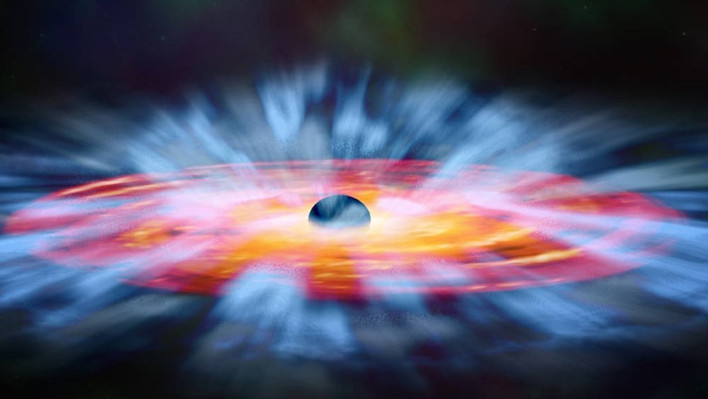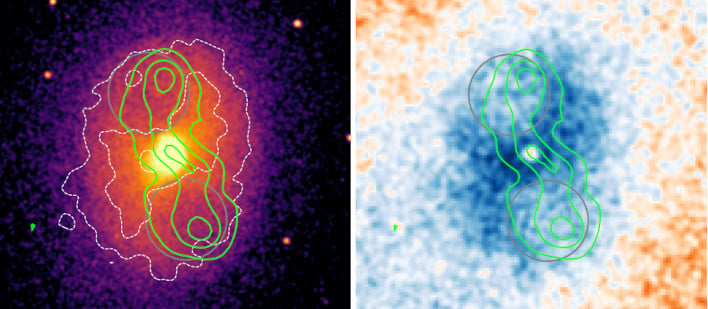Scientists Spot A Supermassive Black Hole Violently Burping Mysterious Radio Bubbles

Supermassive black holes are tremendously dense objects buried in the hearts of galaxies, while smaller black holes exist throughout galaxies. Scientists and astronomers using the National Science Foundation's Green Bank Telescope took a deeper dive into a supermassive black hole located in galaxy cluster MS0735. Their findings have revealed new information concerning radio bubbles surrounding the black hole.
"We're looking at one of the most energetic outbursts ever seen from a supermassive black hole," remarked Jack Orlowski-Scherer, lead author of the publication. He continued, "This is what happens when you feed a black hole and it violently burps out a giant amount of energy."

The team utilized the MUSTANG-2 receiver on the GBT in order to image MS0735 using the Sunyaev-Zeldovich (SZ) effect, which is a subtle distortion of the cosmic microwave background (CMB) radiation due to scattering by hot electrons in the cluster gas. To give a bit of context, the CMB was emitted 380 thousand years after the Big Bang, and is the afterglow of the origin of our universe.
"With the power of MUSTANG-2, we are able to see into these cavities and start to determine precisely what they are filled with, and why they don't collapse under pressure," added Tony Mroczkowski, an astronomer with the European Southern Observatory who was part of the latest research.
The latest information is the deepest high-fidelity SZ imaging yet of the thermodynamic state of cavities in a galaxy cluster, according to a recent press release. It reinforces previous discoveries that at least some of the pressure support in the cavities is from non-thermal sources, such as cosmic rays, relativistic particles, and turbulence.
"We knew this was an exciting system when we studied the radio core and lobes at low frequencies, but we are only now beginning to see the full picture," stated co-author Tracy Clarke, who also co-authored a previous study of this system.

